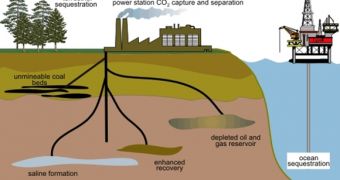The construction of new coal-powered power plants in the US has now grinded to an almost complete standstill, because tighter carbon capture and storage regulations are in place in most states. And because most builders cannot afford the technology needed for sequestration, they simply prefer not to build the plant at all, which could prompt widespread power shortages throughout the country very soon.
Coal is the cheapest and most abundant resource America has, and, as such, MIT researchers came up with an idea that could help developers resume power plant construction while, at the same time, keeping an eye out for environmental damages. In other words, their system only traps portions of the emissions, bringing the total output of the new plants to the level of emissions released by gas-powered facilities.
"Policies such as California's Emissions Performance Standards could be met by coal plants using partial capture rather than having to rely solely on natural gas, which is increasingly imported and subject to high and volatile prices," argues chemical engineering graduate student Ashleigh Hildebrand, who is part of the Technology and Policy Program at the Institute. Complete carbon capture and storage (CCS) represents "a policy of inaction, a policy that won't move forward either new coal plants or the CCS technology," so partial trapping could be a very good first step, the researcher says.
According to her calculations, the prices coal companies have to pay per captured CO2 ton are the same whether their CCS systems capture 60 percent or 90 percent of emissions. The latter percentage is the one that defines complete removal and storage. So, technically, there is no need to remove 90 percent.
And the plan would be flawless but for one small detail – removing 90 percent of emissions was the goal all along. The environment cannot be protected if economic measures take first hand in front of nature-related issues. The new move designed by MIT, if implemented, will only help ease the concerns that entrepreneurs have about their investments, but it will not, under any circumstances, help reduce the level of greenhouse gases in the atmosphere.

 14 DAY TRIAL //
14 DAY TRIAL //